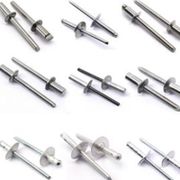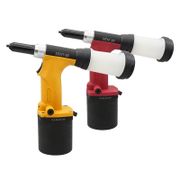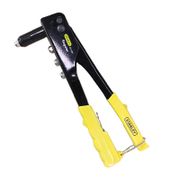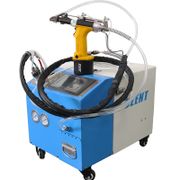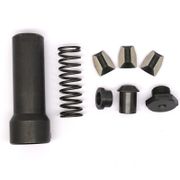1. Definition and Working Principle
A blind nut is designed for one - side installation, making it an ideal choice when access to only one side of the workpiece is available. It consists of a threaded body with a flanged head. When installed, a special tool is used to insert a mandrel into the blind nut. As the mandrel is pulled, it expands the body of the blind nut, causing it to flare out and grip the material from the inside. Once the expansion is complete, the mandrel is either broken off or retracted, leaving a secure threaded insert in the workpiece. This process creates a strong and reliable connection that can withstand significant tension and shear forces.
2. Types of Blind Nuts
2.1 Standard Blind Nuts
These are the most commonly used type. They come in a variety of thread sizes and materials, such as aluminum, steel, and stainless steel. Standard blind nuts are suitable for general - purpose applications where a basic level of strength and corrosion resistance is required. For example, in furniture manufacturing, they can be used to attach wooden components with metal fittings.
2.2 Self - Clinching Blind Nuts
Self - clinching blind nuts are designed to be installed in thin sheets of metal. When installed, they create a flush surface on one side, which is aesthetically pleasing and also reduces the risk of snagging. They are often used in the electronics industry, where a clean and smooth surface is crucial for the assembly of devices. For instance, in the production of computer cases, self - clinching blind nuts are used to attach internal components without creating any protrusions on the outer surface.
2.3 Flush - Mount Blind Nuts
Flush - mount blind nuts are engineered to provide a completely flush finish on both sides of the workpiece. This makes them perfect for applications where appearance matters, such as in high - end automotive interiors or precision machinery. In a luxury car's interior, flush - mount blind nuts can be used to attach decorative panels, ensuring a seamless and elegant look.
3. Advantages of Blind Nuts
3.1 One - Side Installation
The ability to install blind nuts from one side is a major advantage. It eliminates the need for access to both sides of the workpiece, which is often impossible in many applications. This makes them suitable for use in enclosed structures, hollow components, or when working in tight spaces. For example, in the installation of electrical conduits in a building, blind nuts can be used to secure brackets to the wall without having to access the other side of the wall.
3.2 High Strength and Durability
Blind nuts offer excellent strength and durability. Once installed, they form a permanent and robust connection that can withstand harsh environmental conditions, vibrations, and mechanical stresses. In industrial machinery, blind nuts are used to fasten critical components together, ensuring the reliable operation of the equipment over an extended period.
3.3 Versatility
Available in a wide range of materials, thread sizes, and head styles, blind nuts can be used in diverse applications. Whether it's a lightweight aluminum structure in the aerospace industry or a heavy - duty steel frame in construction, there is a suitable blind nut for the job.
4. Application Areas
4.1 Automotive Industry
In automotive manufacturing, blind nuts are used in various applications. They are used to attach interior trim pieces, such as door panels and dashboard components, ensuring a secure and vibration - free connection. Additionally, they are employed in the assembly of the vehicle's chassis and body, where high - strength fastening is required.
4.2 Construction Industry
In construction, blind nuts are used for fastening a variety of materials, including metal, wood, and plastic. They can be used to install curtain walls, attach fixtures to concrete or masonry, and secure structural components. Their ability to provide a strong connection in different materials makes them a popular choice in construction projects.
4.3 Electronics Industry
As mentioned earlier, in the electronics industry, blind nuts are used for assembling delicate components. They are used to attach circuit boards, enclosures, and other parts, providing a reliable and non - intrusive fastening solution. Their small size and precise installation capabilities make them ideal for use in electronic devices.
5. How to Choose the Right Blind Nut
5.1 Material Selection
The choice of material depends on the application and environmental conditions. Aluminum blind nuts are lightweight and offer good corrosion resistance, making them suitable for applications where weight is a concern, such as in aerospace. Steel blind nuts are stronger and more suitable for heavy - duty applications, while stainless - steel blind nuts are highly resistant to corrosion and are often used in marine or outdoor applications.
5.2 Thread Size and Pitch
Select a blind nut with a thread size and pitch that matches the mating fastener. This ensures a proper and secure connection. Incorrect thread selection can lead to loose fittings or difficulty in assembly.
5.3 Installation Method
Consider the installation method and the available tools. Some blind nuts require specialized installation tools, while others can be installed with more common equipment. Ensure that the installation method is compatible with your production process or project requirements.
In conclusion, blind nuts are a highly effective and versatile fastening solution. Understanding their types, advantages, applications, and how to choose the right one can help in making informed decisions for various projects, ensuring efficient and reliable fastening.
